We now return you to your regularly scheduled lunacy.
The Halo series is a landmark in video games and remains a staple in the genre.
Because it's the only way the Microsoft Collective can sell Xboxes.
Bungie's sci-fi epic is a gripping tale about the last of an elite class of human warriors, single-handedly taking on not one but two hostile alien forces that have pushed a once-proud humanity to the brink of extinction. Spanning diverse worlds and mysterious ancient constructs across thousands of light-years, all set to an epic soundtrack blending choirs and electric guitars.
It also bugs the tar out of me. Maybe it's the fact that in the novels, the Spartans were forcibly conscripted to become cyborg super-soldiers. At the age of six. Maybe it's the fact that also in the novels, the AI Cortana was created by cloning human brains so they could be killed and then used as templates. Maybe it's the fact that the UNSC-Insurrection conflict in the backstory has practically no emotional weight, but just leads to ruthlessness from both sides, meaning the only reason we care about the human race surviving is because it's the human race. Maybe it's the series's preoccupation with the number 7. As if putting the number 7 everywhere makes it an Easter egg, or gives it depth.
Maybe it's the fact that the surprise appearance of the Ur-Didact and the Librarian in Halo 4 made me feel as though I was expected to have read the Forerunner prequel novels. Nobody should be expected to read a novel in order to "get" a video game plot.
To sum up, I do see a lot of artistic value in the Halo series. But I also see a series that is absolutely full of itself. It builds itself up as a mythic saga of legend, but it's distilled pop culture fare. It's very well-executed pop culture but still, pop is pop. You can fill a series with capitalized religious nouns like Halo, The Ark, The Covenant, or The Flood, but there's no deeper meaning. On the surface, it's a series about cyborgs killing aliens. Beneath that surface, it's a series about cyborgs killing aliens. No more, no less.
It's also a series that thinks simply acknowledging moral issues makes everything ok. And to be fair, the writers do acknowledge the wrongness of kidnapping children and cloning brains as spare parts. But just because Dr. Halsey thinks "this is wrong but I'm doing it for the survival of humanity but I still feel conflicted" doesn't make her sympathetic. To make things worse, the first time a much-needed harsher criticism appeared in the canon, it had to come from Karen Traviss (if you don't know who she is, look up Republic Commando and its impact on the Star Wars fanbase). Don't shoot the message.
Now I'm not saying all good guys must be moral paragons. Just a couple posts back, I recommended the highly complex Star Trek: Excelsior. I don't hate Halo. I just have a very complex position on it.
One thing that bothers me in a different sense is the portrayal of alien planets. There's plenty to be found, just not in the games themselves. Most of the interesting stuff is in the background material, since the bulk of the series takes place on Earth or on megastructures built by an ancient civilizations (the Halos, the Ark, Dyson spheres, etc). It's a pet peeve of mine for science fiction to relegate the most interesting planets to cameos (see also the Order 66 montage in Revenge of the Sith), especially when you consider that making environments more visually memorable can go a long way toward improving a customer's game experience. Let's dive into the universe of Halo.
Note: all images in this article are pulled from Halopedia.
Balaho
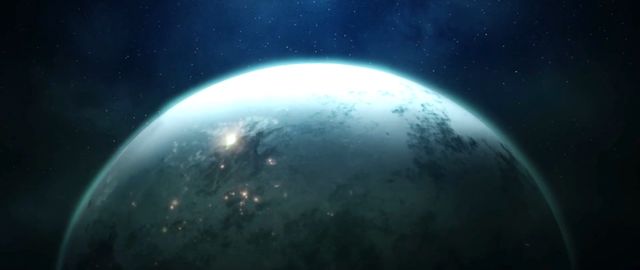
This is one of my personal favorites, as it is the homeworld of the Grunts (aka the Unggoy), who are the only species in the lore that don't appear to breathe oxygen, but methane. According to Halopedia, it's cold, full of marshes, and features naturally occurring pillars of fire (someone please tell me how that could work in reality!) See, an environment like this would be great for a game.
So what's that snow made of? Probably not methane. Ammonia?
Sanghelios
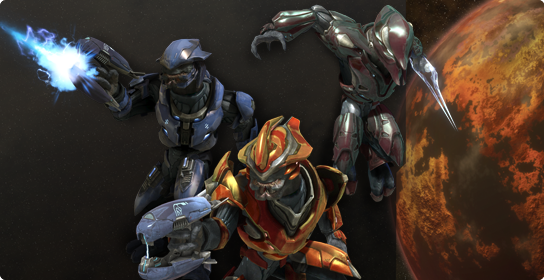
This one's been fleshed out more than the other Covenant homeworlds, and with good reason. It's home to the Elites, the most well-developed aliens in the series (not counting the Forerunners). Rusty color scheme, three suns, high temperatures.
I've never felt more glee about this series than when I learned that this planet would be featured in Halo 5: Guardians. Almost makes me want to go out and buy an Xbox One. Almost.
Eayn
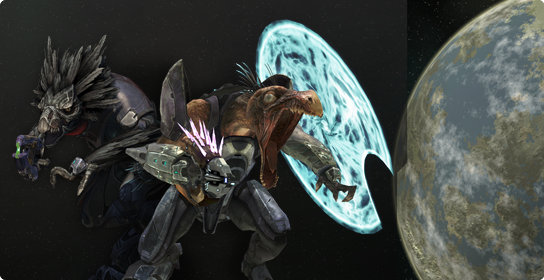
Homeworld of the Kig-Yar ("Jackals"), there's not much built up about it but I like it because it's part of a larger star system that the natives seem to have traveled quite extensively, with multiple colonies. Nice to see that not all alien races stick to their homeworlds.
Oh, and did I mention Eayn is actually a moon of Chu'ot, known to humans as HD 69830 d? Not many sci-fi works use real exoplanets. Although...this does beg the question: if we knew about the Jackal homeworld for centuries, how did we humans, who had roughly 800 planets colonized by the time of first contact with the Covenant, not notice their interplanetary civilization for over 500 years?
Te
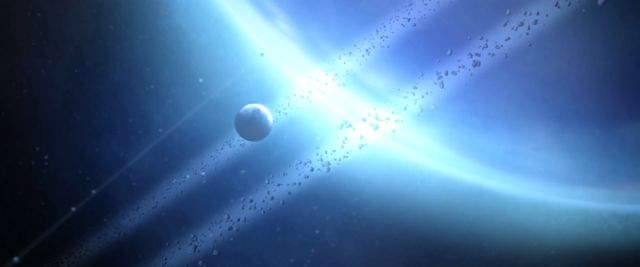
This doesn't look like the kind of planet that would be a sentient species' homeworld. Apparently it's a gas giant (the writers were inconsistent in the details, another issue I have with the franchise) and has a surface gravity four times that of Earth. Yet the Hunters managed to get off the planet and onto its rings. Or something. Perhaps they originated floating at some depth in the gas giant, possibly even down to its solid core, and then the Forerunners evacuated them? The lore does seem to imply they feed on metals, suggesting an alternative biochemistry.
Nothing has really been explained about the surface which may or may not exist, but it must be exotic if the environment gives rise to an intelligent species that consists of collectives of worms.
Reach
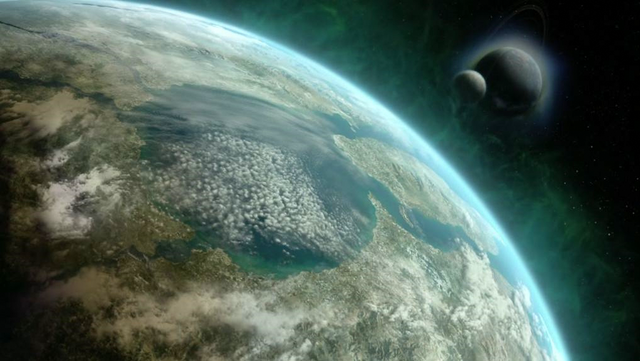
One of the few planets to be featured in the actual games. I bring this one up because the entirety of Halo: Reach is set here (duh) and it is thus more fleshed out than most planets in the games. Also its moon has rings.
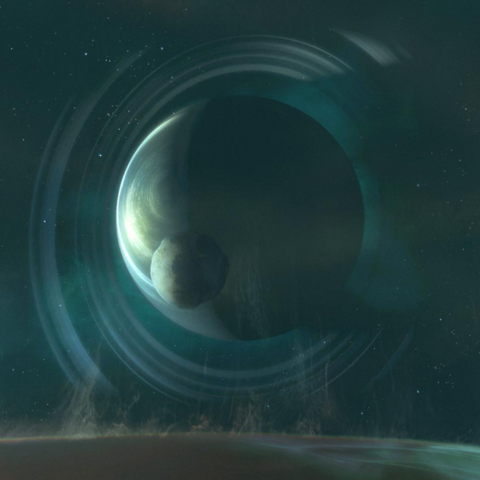
On Reach it always seems like it's the sky that reminds you on an alien planet. It's slightly greener than Earth's, and you can usually see ringed Csodaszarvas and tiny Turul in the sky. Which is quite an exotic view. Ringed moons aren't exactly common in sci-fi but they are possible in real life. It's an idea that my pre-existing mindset rebels at but also an idea I find intriguing. Also, look closely at that image; it looks like Turul isn't quite spherical. And are those clouds on the larger moon's face? Does it have an atmosphere? I'd have like to see some Firefight or multiplayer maps set on one or both of these moons.
Even its improbable Earthlike quality isn't necessarily a bad thing. It still feels like it's not quite Earth. Look at it from space and just the color scheme tells you it's not Earth.
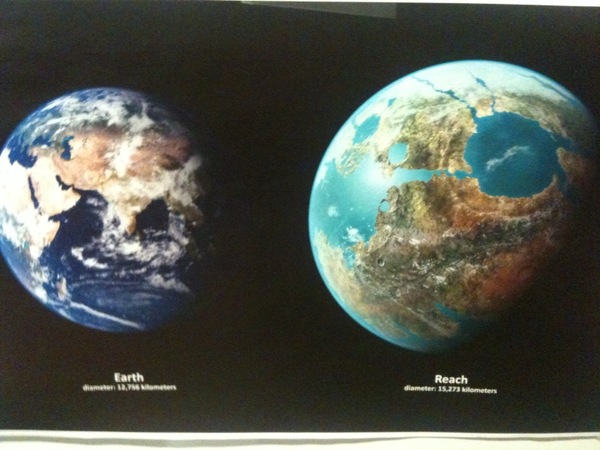
I'm glad that even the "Earthlike" planets aren't necessarily just Earth clones. There are many degrees of "alienness" to planets.
Threshold and Basis
Seen in the very first installment, They only serve to fill the sky on Alpha Halo. But they certainly do the job. Large moons filling the sky isn't exactly new to sci-fi but the level of texture detail on these bodies left an impression on. Me. It struck me as interesting how Threshold, a gas giant, didn't really look like one. I decided that this was because the planet is so big that the cloud patterns appear highly complex, and I inwardly applauded the developers for cleverly providing a sense of scale.
A Word About Aliens
There's not a lot to say about the different alien species in Halo. Most of them follow the humanoid body plan (two arms, two legs, two eyes and a mouth on the head), although there are some variations. I like the quad-mandibles on the Elites, the way the Jackals are divided into different subspecies, and the way the Hunters are actually collectives of worms ("Lekgolo"). You know the Scarabs, the massive walking tanks? Those are made of Lekgolo too! The Huragok, aka Engineers, are cool in that they float like balloons, but they're genetically engineered so I have a hard time counting them. (They actually "build" their offspring.)
There's also a lot of concept art floating around of deleted concepts for ambient wildlife. I really think the game could have built up a more distinct identity if the developers had gone with that route.
Alas, aside from a few barely-glimpsed fish, bugs, and birds, all we really get are the guta and the moa in Halo: Reach. Which I still like because it helps to flesh out the planet Reach some more.
Despite everything bad I have to say about the Halo saga, it isn't a manufactured saga, but a crafted one. You can see the love and dedication that goes into the storytelling, the worldbuilding, and the characterization. As our Internet society becomes increasingly prone to criticism and nitpicking, I think it's vital that we take the time to remove the jade-colored glasses and appreciate the awesome, the impressive, the well-crafted, independent of irony.
Believe.

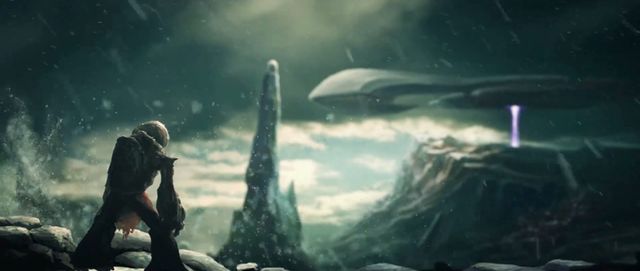

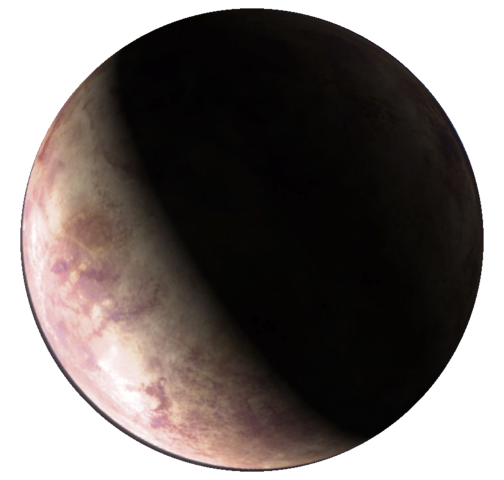

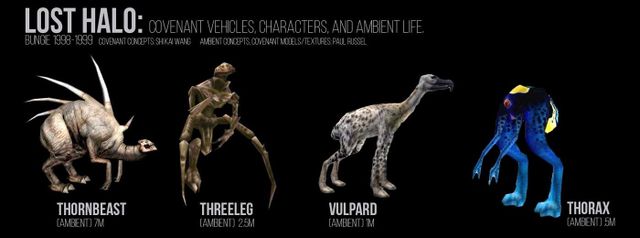
No comments:
Post a Comment